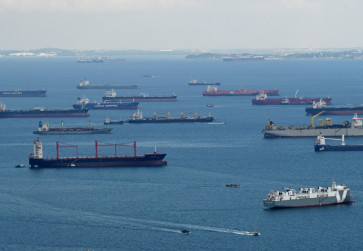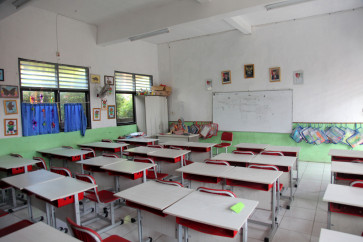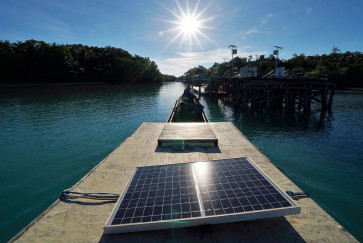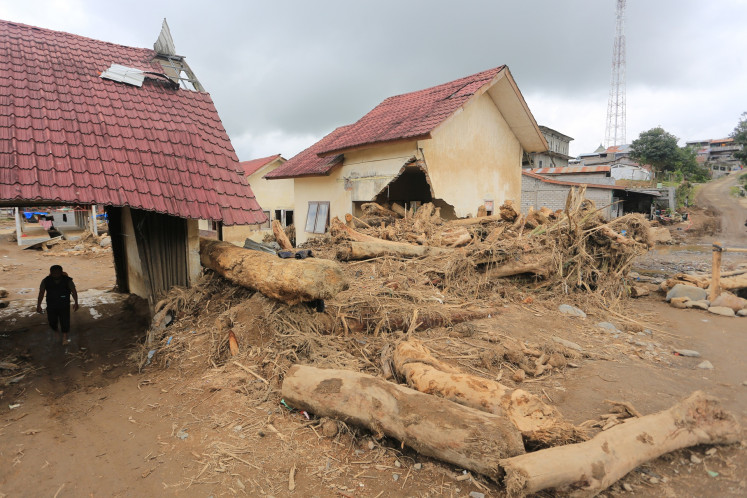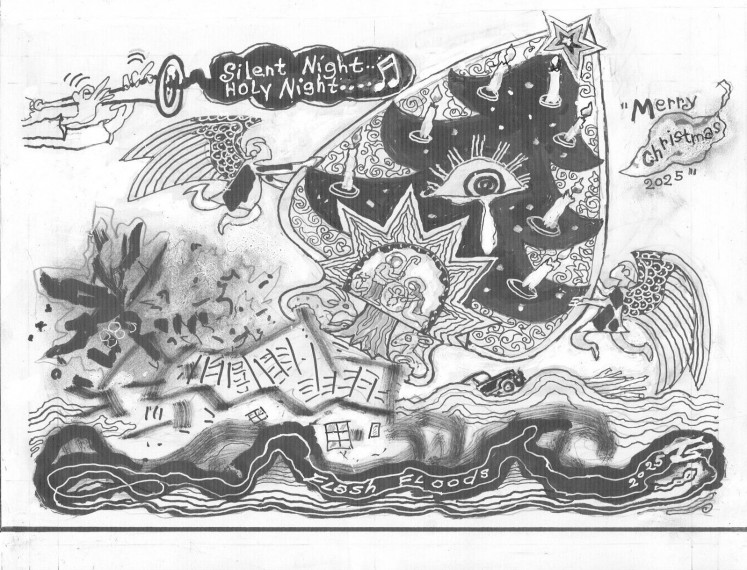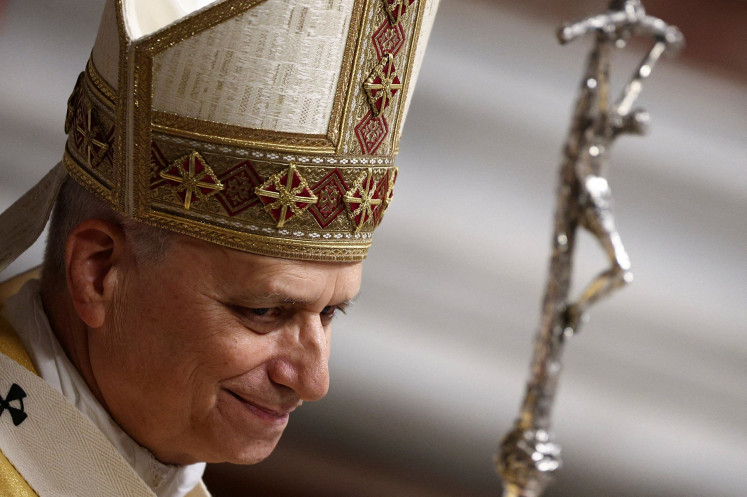Popular Reads
Top Results
Can't find what you're looking for?
View all search resultsPopular Reads
Top Results
Can't find what you're looking for?
View all search resultsTransjakarta lanes to be concreted
The city administration is aiming to improve public transportation infrastructure, with Transjakarta busway lanes being its priority within the next two years
Change text size
Gift Premium Articles
to Anyone
T
he city administration is aiming to improve public transportation infrastructure, with Transjakarta busway lanes being its priority within the next two years.
Deputy Governor Basuki 'Ahok' Tjahaja Purnama said that improved public transportation infrastructure would eventually encourage residents to shift from private vehicles.
'We will prioritize busway lanes over regular roads because we want to ensure public transportation passengers' convenience. We aim to pave all bus lanes with quality concrete so Transjakarta bus trips will be smoother,' Ahok said at City Hall over the weekend.
'On the way, passengers can read or text more comfortably,' he added.
To prevent busway lane resurfacing from hampering Transjakarta bus operations, Ahok said that the administration would use the latest concrete-laying technology, which would only take a few hours.
'For example [cement producer] Holcim produces cement that can dry within seven to 10 hours. We used it when we upgraded roads in the Manggarai tunnel and Tanjung Priok-Marunda [North Jakarta]. In North Jakarta, we started working at 9 p.m. and finished at 5 a.m.,' he cited.
Holcim, he added, had registered its product with the e-catalogue, the latest e-government program that enables the city administration to skip tenders when carrying out city programs. The e-catalogue comprises lists of products and prices that have been assessed by the government's Goods and Services Procurement Agency (LKPP).
The busway lanes project will be carried out within two years, with three corridors set to be prioritized this year and the remaining corridors the next year. The Transjakarta bus rapid transit system currently has 12 corridors served by more than 800 buses.
The Jakarta Public Works Agency is currently assessing the corridors that need to be prioritized this year.
The city administration has pledged to repair damaged roads and overlay them with international-standard concrete.
Earlier this year, the deputy governor said the city aimed to improve 144,000 square meters or 3 percent of Jakarta's roads, which cover a total length of 7,208 square kilometers.
He said that paving the roads with concrete was slightly more expensive than using hot mix asphalt, but the maintenance costs were much lower.
Concrete is believed to be more durable than asphalt, as it can bear loads of more than 14 tons, almost twice the maximum weight load of asphalt, which is 8 tons.
The Public Works Agency recorded a total 6,767 damaged road sites covering a combined area of 138,249 square meters across the capital after the recent flooding, the majority of which was in North Jakarta.


